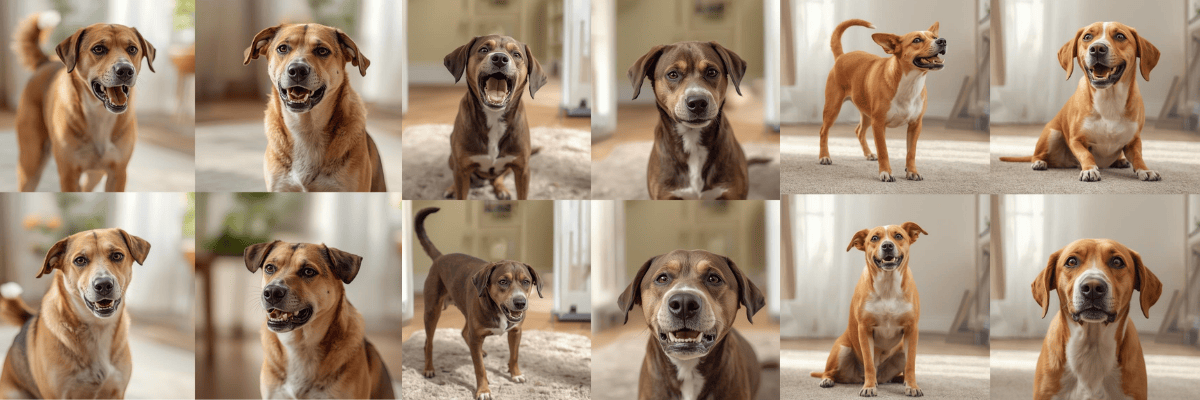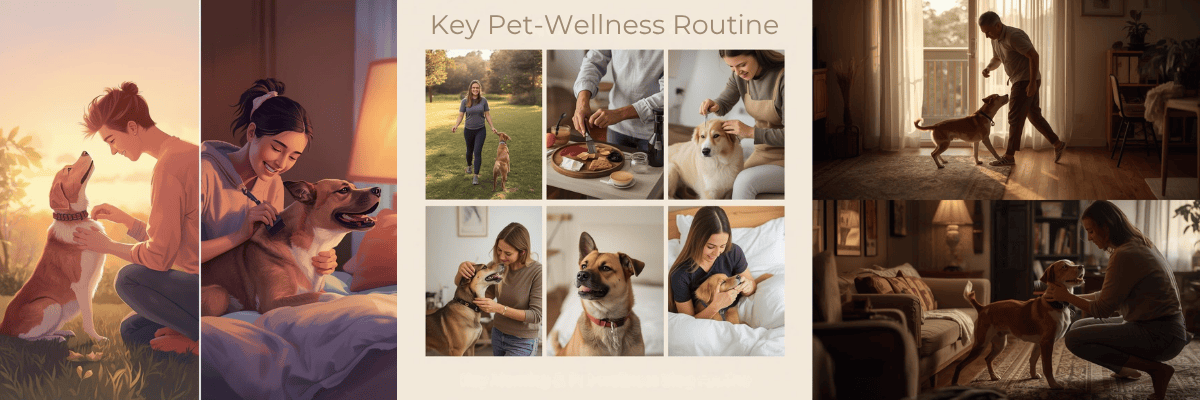Introduction
Dog growls are one of the most misunderstood forms of canine communication. While a growl can sometimes sound intimidating or alarming, it doesn’t always signal aggression. In fact, growling is a natural way for dogs to express a wide range of emotions—from playfulness and excitement to fear, anxiety, or pain. Understanding the context and accompanying body language is key to interpreting what your dog is really trying to communicate. In this post, we’ll explore the different meanings of dog growls in various situations, helping you respond safely and strengthen your bond with your furry friend.
Understanding Dog Growls
Growling is a natural and important form of communication for dogs. It allows them to express emotions, signal boundaries, or convey discomfort without resorting immediately to biting. Not all growls indicate aggression—dogs may growl out of playfulness, fear, anxiety, or pain.

To interpret a growl accurately, it’s essential to observe:
- Tone and Pitch: A low, guttural growl may indicate threat or discomfort, while higher-pitched growls are often playful.
- Body Language: Stiffness, ear position, tail movement, and facial expressions provide context.
- Situation: The environment and triggers—such as people, other dogs, toys, or food—affect the meaning of a growl.
By understanding these factors, owners can distinguish between harmless growls and those that signal caution or concern, ensuring safer interactions with their dog.
Growls as a Sign of Playfulness
Not all growls are a warning—many dogs growl when they are excited and playful. Recognizing playful growls can help you enjoy fun interactions without misinterpreting your dog’s intentions.
- Play Growls: These are often higher-pitched and accompanied by bouncy, relaxed movements.
- Body Language: Look for wagging tails, play bows (front legs stretched forward with rear in the air), and relaxed ears.
- Common Situations: Tug-of-war, fetch, or roughhousing often prompt playful growls.
- Key Difference: Playful growls are short, intermittent, and paired with positive behaviors, unlike aggressive growls, which are sustained and rigid.

Understanding these cues allows you to engage safely in play while reading your dog’s enjoyment correctly.
Growls Indicating Fear or Anxiety
Some growls are a dog’s way of expressing fear or discomfort. Recognizing these signals is crucial for keeping both you and your dog safe.

- Fear Growls: Typically low-pitched and accompanied by tense body language.
- Body Signals: Ears flattened, tail tucked, body crouched or leaning away, and avoiding direct eye contact.
- Situational Triggers: Unfamiliar people or animals, loud noises, new environments, or sudden movements can provoke fearful growls.
- How to Respond: Approach calmly, give your dog space, avoid forcing interaction, and use reassuring tones. Avoid punishing a fearful growl—it’s a warning meant to prevent conflict.
By understanding fear growls, you can reduce your dog’s stress and prevent escalation to aggressive behavior.
Growls as a Warning or Aggression
Aggressive growls are serious signals that your dog is uncomfortable and may be ready to defend themselves or their resources. Understanding these growls is essential for safety.
- Aggressive Growls: Usually deep, sustained, and accompanied by intense focus on the target.
- Body Language: Stiff posture, raised hackles, direct stare, ears forward or slightly back, and sometimes showing teeth.
- Situational Triggers: Protecting food, toys, territory, or responding to perceived threats.
- How to Respond: Avoid confrontation, give your dog space, and do not attempt to punish the growl. Consistent training and professional guidance may be needed for persistent aggression.
Recognizing aggressive growls early helps prevent bites or other unsafe encounters while teaching your dog boundaries in a safe, respectful way.
Growls Due to Pain or Discomfort
Sometimes, growling is a dog’s way of signaling that they are in pain or feeling unwell. These growls are often subtle and can easily be mistaken for aggression if the context is not understood.
- Pain Growls: Usually low, soft, or short, often triggered by touch or movement.
- Body Language: Sensitivity to being touched, avoiding certain movements, limping, or stiff posture.
- Situational Triggers: Injury, illness, post-surgery discomfort, or sensitive areas being touched.
- How to Respond: Stop the interaction immediately, check for injuries, and consult a veterinarian if necessary. Avoid punishing the growl—it’s a protective response, not misbehavior.
Understanding pain-related growls ensures that your dog receives proper care and prevents further stress or injury.
Contextual Cues to Interpret Growls
To accurately understand what a growl means, it’s important to consider the context, body language, and vocal characteristics. Here’s what to observe:
- Body Posture: Relaxed vs. stiff posture can indicate playfulness or aggression.
- Tail Position: Wagging or neutral tails often signal positive emotions, while tucked or raised tails may indicate fear or dominance.
- Ear Orientation: Forward or alert ears suggest attention or aggression; flattened ears may signal fear.
- Facial Expressions: Watch for bared teeth, raised hackles, lip licking, or a soft relaxed face.
- Situational Context: Consider what’s happening—playtime, feeding, unfamiliar people, or a stressful environment.
- Vocal Tone and Frequency: Short, intermittent growls may be playful; long, deep growls usually indicate warning or discomfort.
By combining these cues, you can better interpret your dog’s intentions and respond appropriately, whether it’s joining in play, offering reassurance, or giving them space.
How to Respond Appropriately
Responding correctly to a dog’s growl is key to maintaining safety and building trust. The approach depends on the type of growl and the situation:
- Play Growls: Encourage safe play, monitor intensity, and ensure the dog remains relaxed and non-aggressive.
- Fearful Growls: Give your dog space, approach calmly, speak softly, and avoid forcing interaction.
- Aggressive Growls: Do not confront or punish the dog. Give them room and, if persistent, seek guidance from a professional trainer or behaviorist.
- Pain Growls: Stop interaction immediately, check for injury or illness, and consult a veterinarian if needed.
Always observe body language and the environment to determine the proper response. Respecting your dog’s warnings and cues strengthens your bond and prevents potential conflicts.
Conclusion
Dog growls are a natural and valuable form of communication, conveying a wide range of emotions from playfulness and excitement to fear, discomfort, or aggression. By paying attention to context, body language, tail position, and vocal tone, you can accurately interpret your dog’s intentions and respond appropriately. Understanding growls not only keeps you and your dog safe but also strengthens your bond and enhances your relationship. Respecting these signals ensures your dog feels heard, secure, and loved in every interaction.




Leave a Reply